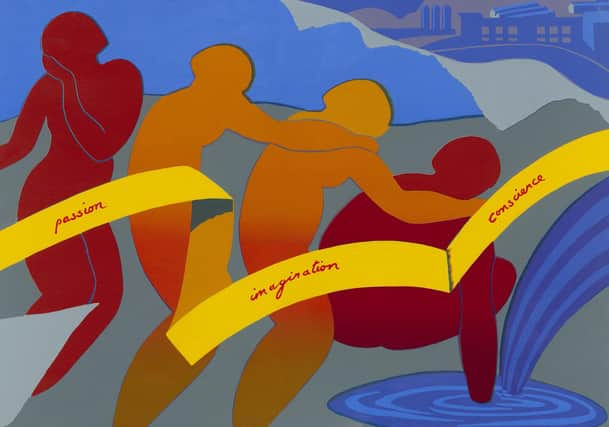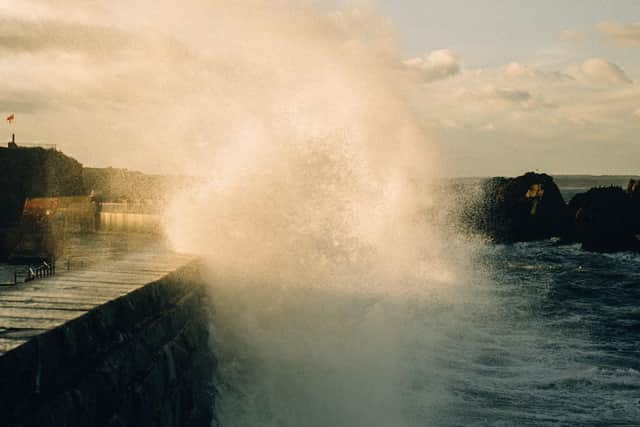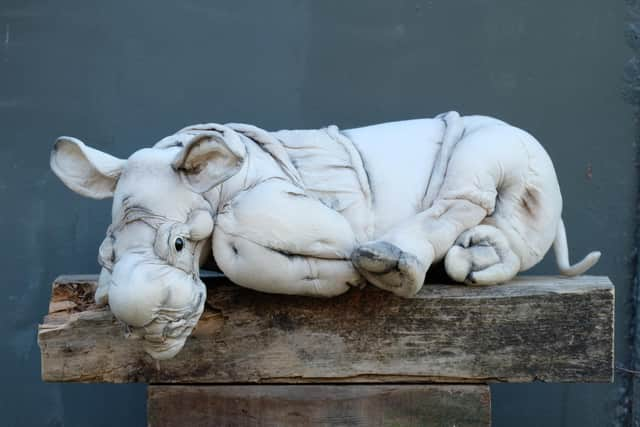Art reviews: Workshop | Robbie Lawrence | Catherine Davison | Julia Levander Drew


Workshop: Selected Prints from the Archive, Edinburgh Printmakers ***
Robbie Lawrence: Northern Diary, Stills, Edinburgh *****
Catherine Davison: Flow, Open Eye Gallery, Edinburgh ***


Julia Levander Drew: On Our Terms, Union Gallery, Edinburgh ****
Advertisement
Hide AdSince Edinburgh Printmakers reopened at its new home in Castle Mills in 2019, the emphasis has been on new work and contemporary artists. All good and proper, but meanwhile the organisation has been sitting on a treasure trove in terms of its archive.
Since it opened on Victoria Street in 1967, EP’s clientele has read like a who’s who of Scottish art, from John Bellany and Eduardo Paolozzi to Alasdair Gray, Sam Ainsley, Louise Hopkins and Rachel Maclean, naming but a few. And since the workshop retained one print from every edition made in collaboration with its master printmakers, it now has a considerable collection.
Rather than simply grabbing the most sensational things and putting them on the walls, curator Tiffany Boyle has put a lot of thought into this show, building three distinct sections. ‘Bold Impressions’ is a group of highlights presided over by Sam Ainsley’s beautiful diptych, ‘Passion, Imagination, Conscience’, which acts like a statement of intent. Works are placed next to each other so conversations can start: Dominic Snyder and Peter Pretsell, William Gear and Caroline McNairn.


‘Ditto’ is another group of conversations: Jacqueline Donachie and Adrian Wiszniewski, Susan Philipsz and Hanna Tuulikki. And there is a group of posters from the 1970s onwards highlighting exhibitions the building hosted, from David Hockney and Patrick Caulfield to the ‘Fresh’ show in 2005 which seemed to include all the biggest names in BritArt.
In the upper gallery, ‘Texting Voice’ is full of still more highlights, this time bringing together artists who have used text in their work, from John Bellany’s sinister Barber Shop, to Alasdair Gray’s portraits, from Tacita Dean’s unique monoprints, made for her Fruitmarket show in 2018, to an inspired work by Louise Hopkins which explores the nature of redaction and erasure with a blind embossed etching.
With a hidden gem round every corner, it’s surprising that the show is somewhat lacking in visual impact. The double-height gallery space towers over prints, which need intimate viewing, and the show needs more of a story about this place and these artists. But it is a fascinating glimpse into an archive few people knew existed and brims full of potential for further excavation.
Advertisement
Hide AdMeanwhile, Stills hosts the first solo exhibition by Scots-born photographer Robbie Lawrence. Trained with the New York Times in Paris, he is working in documentary tradition forged by the likes of Cartier-Bresson and Robert Frank.
Three bodies of work fill this modestly sized gallery. Northern Diary is a series of pictures from northern Britain in the aftermath of Brexit, portraits of people and places, and people in places, thoughtfully composed and beautifully lit. It’s questionable whether a photograph can convey something as intangible as “an increasingly fraught political landscape”, but this portrays a complex place, uncertain of itself, and on the cusp of change.
Advertisement
Hide AdThe middle section is given over to ‘Life Above the Linn’, a photographic tribute to Jim Taggart, the botanist and climate activist who founded Linn Botanic Gardens on Rosneath Peninsula, who died in 2019. It’s elegiac in tone, the softly slanting light, the dying flowers, the windfall apples on the table, while the portraits of Taggart himself, with his flowing hair and beard, make him look like a timeless sage. The theme - further brought out in four fine new poems by John Burnside - is time, both how finite it is and, for a gardener, how circular: “summer is gone/ summer is still to come.”
The tone lifts in the third section which celebrates young people in the Highlands returning to Highland dancing lessons after a year in lockdown. Here, the still photographs capture exuberant movement, play as well as dance, while Lawrence’s first film shows that he brings the same qualities - attention to detail, composition and light - to the moving image. It’s an outstanding show, in tone, sensitivity and craft, signalling a name about which we should hear much more.
Catharine Davison’s paintings make a different kind of study of place. Many of the works now at the Open Eye Gallery were painted during the pandemic when the artist was confined to her locality of Edinburgh and, at times, to the boundaries of home and garden.
In 2018, Davison began to focus on the Water of Leith, an artery through the city, connecting the urban realm to the Pentlands where the river has its source. In lockdown, the Water of Leith path became an important focus for recreation and walks, and it links together many of these paintings.
While some capture views from the path itself, more often they seek open spaces, city parks (so important to all of us in lockdown) and views from the hills. Davison is a plein air painter who favours instinctive mark-making to overly formal composition, and whose work ranges from descriptive studies of place to tonal semi-abstract works capturing light and mood.
Some of her larger works are her most ambitious. ‘A New World’ captures a familiar vista transformed by snowfall into a patchwork of greys, pinks and browns and ‘The Ground Beneath The Trees (Spylaw Park)’ is a dazzle of spring light dappling the grass in a kind of pointillism. She is an artist of considerable variety and it will be interesting to see what she does next.
Advertisement
Hide AdAnd now for something completely different: Swedish-born, Fort William-based Julia Levander Drew’s first solo show at Union Gallery. Drew is a textile artist, but really she is a sculptor. Her subjects are animals, and she makes them in a way which combines cunning observation, anatomical precision and finely judged pathos.
But this is not a show of cutesy creatures (although there are four hares playing poker which would crack a smile on the grimest countenance). It announces itself with the head of a wounded rhino, a spill of red jewels where its horn should be, while a calf crouches underneath. There’s a polar bear perched on a giant ice cream sundae (‘The Ice is Melting’) and a pangolin (the most trafficked of all creatures), each of its scales meticulously stitched. Two monkeys are chained to their smart phones (which are also lamps).
Advertisement
Hide AdThe show’s title ‘On Our Terms’ is spelled out in an acronym of endangered creatures: orca, numbat, okapi etc, each of them trapped and suspended from a hook. The sculptures in the show are interspersed with paintings, animal studies in which the creatures are pushed to the edges of the frame, or where they trespass in our world, lounging on our sofas or (in the case of a particularly enraged fox) screaming at our complacency.
This is a show about how we are failing the animal world, a familiar message, but here it feels new. Drew’s compassion, originality and the sheer quality of her craftsmanship sees to that. We need to hear more of her, too.
Workshop: Selected Prints from the EP Archive, until 26 June; Robbie Lawrence: Northern Diary until 25 June; Catharine Davison: Flow until 30 April, Julia Levander Drew: On Our Terms until 8 May.
Comments
Want to join the conversation? Please or to comment on this article.